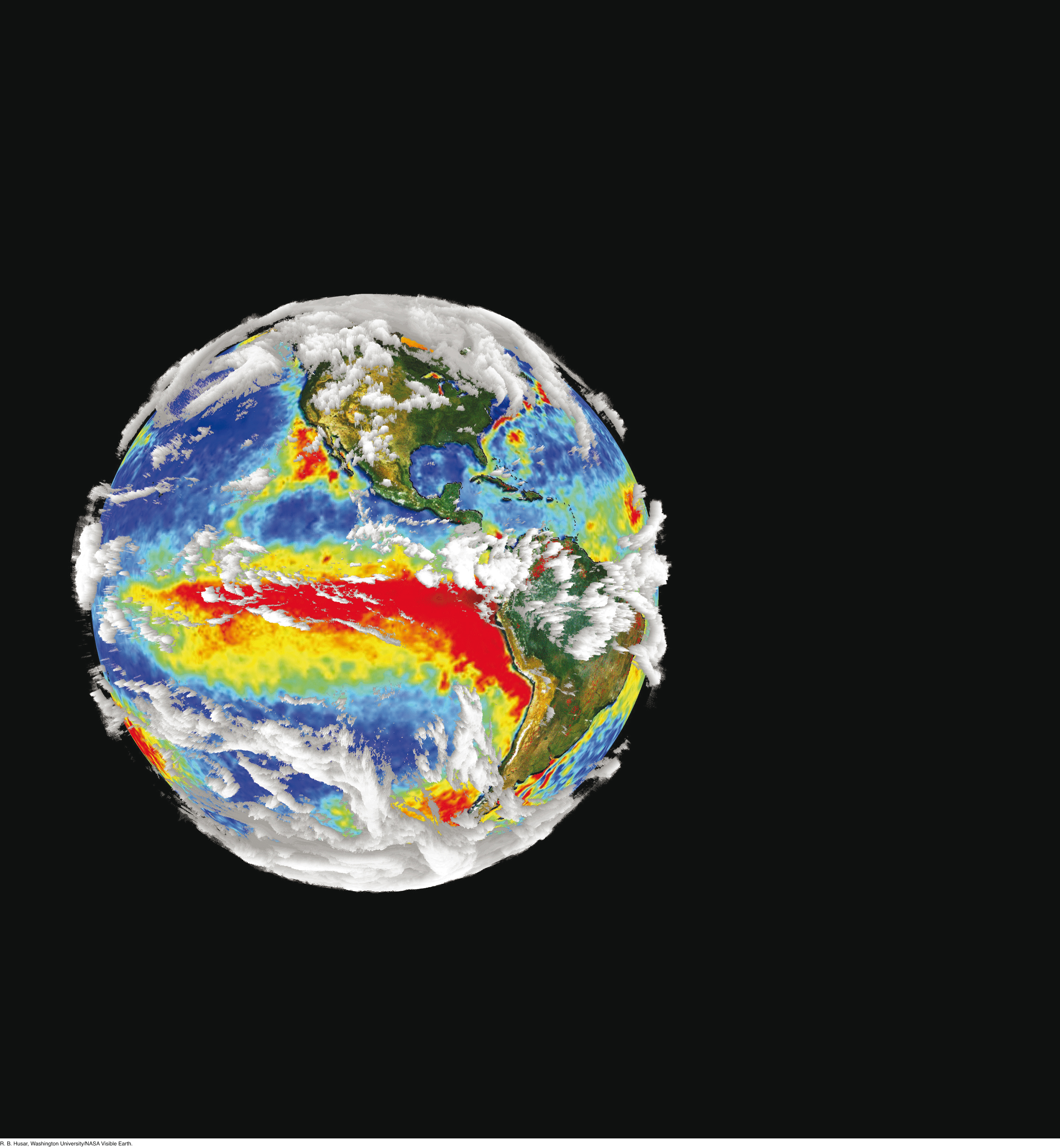406

THE CLIMATE SYSTEM
 Components of the Climate System
Components of the Climate System The Greenhouse Effect
The Greenhouse Effect Climate Variation
Climate Variation The Carbon Cycle
The Carbon Cycle Twentieth-Century Warming: Fingerprints of Anthropogenic Global Change
Twentieth-Century Warming: Fingerprints of Anthropogenic Global Change
407
IN THE LAST SEVERAL CHAPTERS, we descended into Earth’s deep interior to explore the internal heat engine that drives the plate tectonic system and the geodynamo. In this chapter, we return to Earth’s surface to examine a global geosystem powered not by Earth’s internal heat engine, but by external heat from the Sun: the climate system.
No aspect of Earth science is more important to our continued well-being than the study of the climate system. Throughout geologic time, evolutionary radiations and extinctions of organisms have been closely connected to changes in climate. Even the short history of our own species is deeply imprinted by climate change: agricultural societies began to flourish only about 11,700 years ago, when the harsh climate of the most recent ice age was rapidly transformed into the mild and steady climate of the Holocene epoch. Now, a globalized human society based on a petroleum-fueled economy is injecting greenhouse gases into the atmosphere at an ever-increasing rate, with potentially dire consequences: global warming, sea level rise, and unfavorable changes in weather patterns. The climate system is a huge, incredibly complex machine, and, like it or not, our hands are on the controls. We’re in the driver’s seat, with pedal to the metal, so we had better understand how the machinery works!
In this chapter, we will examine the main components of the climate system and the ways in which those components interact to produce the climate we live in today. We will investigate the geologic record of climate change and discuss the important role of the carbon cycle in regulating climate. Finally, we will look at the evidence for recent global warming and its relationship to changes in the composition of the atmosphere caused by human activities.
408
An understanding of the climate system will equip us to study the wide range of geologic processes that shape the face of our planet—weathering, erosion, sediment transport, and the interaction of the plate tectonic and climate systems—which will be the topics of the next seven chapters. The material presented here will also prepare us for the final topic of this textbook: a geologic perspective on the resource needs and environmental impacts of human society.